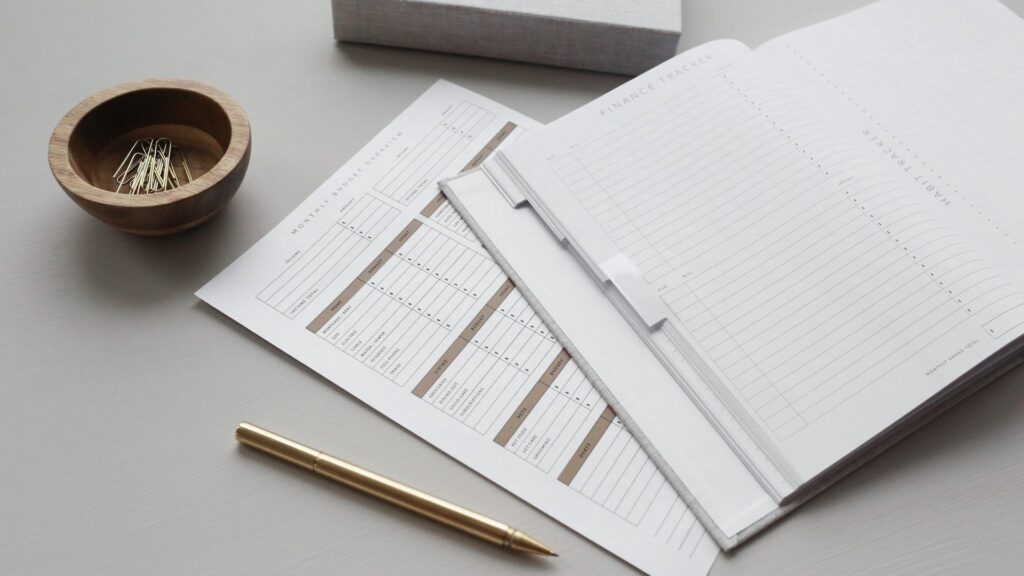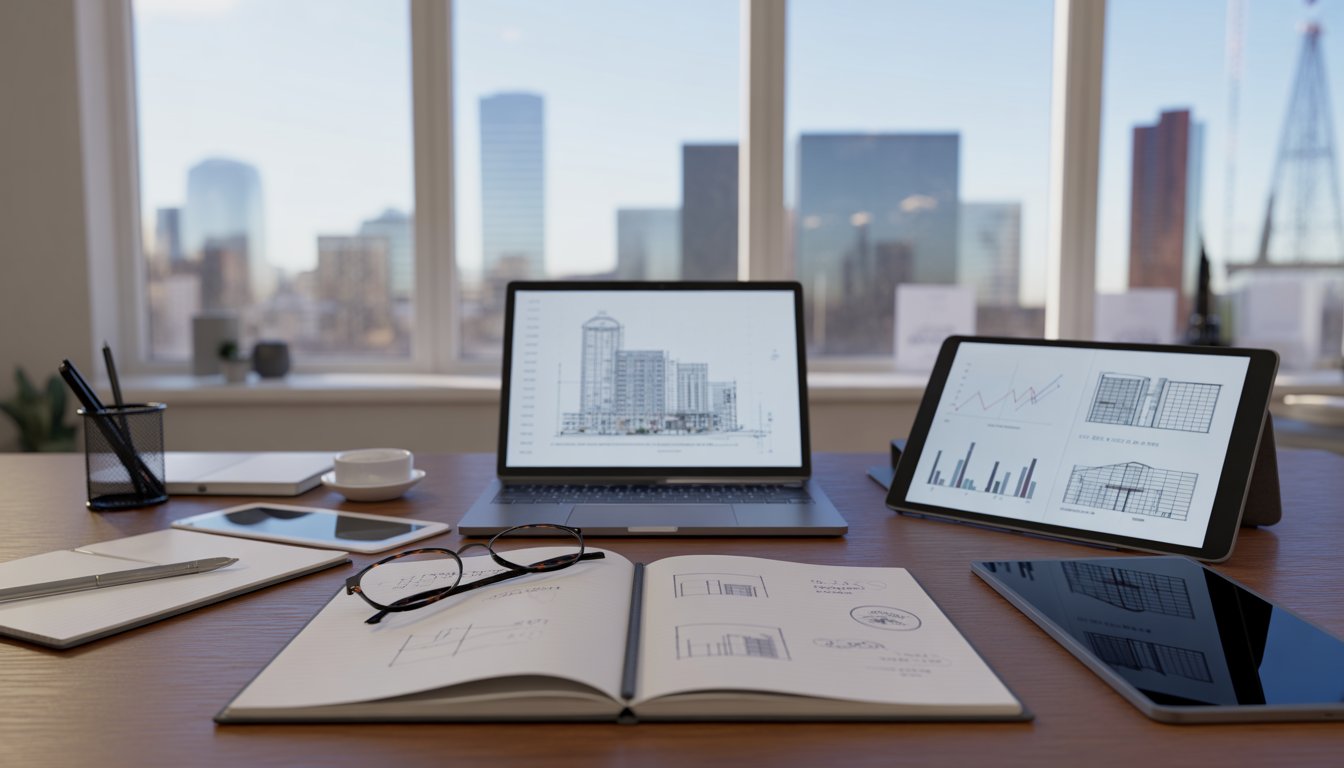Maintaining your rental properties is crucial for preserving their value and keeping tenants satisfied. By employing effective and fast maintenance strategies, you can address issues before they escalate, ensuring your properties remain in excellent condition.
This article will guide you through practical approaches to streamline your maintenance process, reduce costs, and foster a positive relationship with your tenants. You’ll discover actionable tips to simplify property upkeep while maintaining high standards in rental property management.
Key Takeaways
- Fast maintenance strategies help keep rental properties in top condition
- Proper planning and clear communication save time and effort
- Efficient management practices benefit both you and your tenants
Understanding Maintenance Issues and the Importance of Prompt Action
Regular property maintenance safeguards your investment and directly affects tenant safety and satisfaction. Immediate attention to maintenance issues, such as water damage or malfunctioning systems, helps ensure your property stays compliant with health and safety standards.
Common Maintenance Concerns:
- Plumbing leaks
- Broken appliances
- Structural deterioration
- Water damage
Timely property inspections and repairs also help you identify potential hazards before they become costly problems. Prompt response not only maintains the condition of your rental units but also demonstrates your commitment to tenant well-being. Adhering to best practices in property maintenance can prevent recurring property damage and support long-term tenant retention.
Overview of Strategies for Addressing Maintenance Issues Quickly
To address maintenance concerns promptly, use a blend of proactive planning and technology. Regular communication with tenants and vendors not only encourages faster reporting but also speeds up non-emergency repairs. Adopt clear, written maintenance policies that outline the steps and timelines for property management services; this keeps your tenants and contractors on the same page.
Best practices include:
- Scheduling regular property inspections
- Utilizing property management software for tracking requests
- Clear documentation for each repair or service
| Strategy | Benefit |
|---|---|
| Preventative maintenance checks | Minimizes costly emergency repairs |
| Automated service request systems | Quicker response times |
| Defined repair procedures | Streamlines workflow for property owner |
Explore more property management maintenance strategies in this comprehensive guide and discover additional maintenance efficiency methods here.
Strategy 1: Timely Communication

Consistent, timely communication with tenants is critical to minimizing misunderstandings and maintaining the value of your rental property. When tenants report concerns—whether routine maintenance requests or urgent issues requiring emergency repairs—quick responses demonstrate professionalism and respect. Utilizing an online tenant portal allows you to receive and track tenant communication in real-time, offering 24/7 access for reporting problems like faulty appliances or leaks.
Benefits of Timely Communication:
| Benefit | Impact |
|---|---|
| Faster maintenance response | Limits property damage |
| Improved tenant satisfaction | Increases retention rates |
| Clear documentation for property maintenance | Eases compliance and recordkeeping |
| Reduced stress for both parties | Promotes positive relationships |
Timely updates also allow you to coordinate with contractors or hire a professional when necessary. Automatic reminders (via SMS or email) help keep tenants informed about maintenance schedules, upcoming inspections, or changes due to emergency maintenance. This proactive approach reduces downtime and avoids the pitfalls of delayed rental property repairs.
Communicating rules on what qualifies as emergency repairs versus routine fixes ensures tenants know how to respond when time-sensitive issues arise. If your property maintenance services offer DIY troubleshooting guides for common issues, sharing these through the portal or email can empower tenants to handle minor problems independently until a contractor arrives.
Staying up to date with local laws on tenant communication is essential, especially when sending official notices or discussing repairs. By integrating digital solutions and following best practices, you create a transparent and efficient process that enhances tenant communication and helps you manage your rental property more effectively.
Strategy 2: Establish Clear Policies and Procedures

Clear policies and procedures set the foundation for efficient rental property management. By outlining how maintenance tasks are handled, when rent is due, and what qualifies as an emergency, you ensure that both you and your tenants know what to expect throughout the lease term.
A comprehensive maintenance plan should specify reporting procedures, expected repair timelines, and guidelines for move-out inspections. You can use a property maintenance checklist or a move-in checklist to document property conditions and clarify tenant responsibilities for upkeep.
A straightforward approach is to formalize key areas in your documentation, such as:
- Regular property inspections
- Response times for various maintenance requests
- Deposit handling procedures
- Scope of tenant vs. landlord maintenance obligations
- Emergency contact information
| Policy Topic | What to Include |
|---|---|
| Maintenance Requests | Submission process, repair timeframes |
| Rental Payments | Due dates, late fee structure |
| Inspections | Frequency, tenant notification process |
| Move-In/Move-Out Checklist | Detailed property condition review and responsibilities |
| Emergency Situations | Definition, steps for tenants to report |
Providing tenants with an easily accessible rental property maintenance checklist or a maintenance checklist at move-in encourages timely reporting of issues and helps track completed maintenance. This transparency supports smoother communication and reduces misunderstandings about maintenance obligations.
Following a detailed maintenance policy not only streamlines property care but can also help anticipate and prevent disputes. Clear procedures, documented in your agreement and reinforced through regular communication, build trust and make ongoing management simpler for everyone involved. For more on maintenance planning and checklists, visit this rental property maintenance guide.
Strategy 3: Invest in Preventative Maintenance Measures
Proactively investing in preventative maintenance is a key strategy for protecting your rental property and preserving its value. Regular inspections and planned maintenance reduce the risk of emergency repairs and unplanned expenses. This approach keeps your property in top shape and increases tenant satisfaction.
Key preventative measures include:
- Checking and testing smoke detectors for fire safety
- Replacing filters in heating and cooling systems for better air quality and efficiency
- Scheduling routine pest control to avoid infestations
- Inspecting plumbing for leaks or standing water to prevent water damage
- Cleaning gutters and ensuring proper drainage
- Examining doors and windows for drafts or seal issues
| Maintenance Task | Frequency | Why It Matters |
|---|---|---|
| Smoke Detector Testing | Monthly/Quarterly | Fire safety, legal compliance |
| HVAC Filter Replacement | Quarterly | Energy efficiency, air quality |
| Pest Control | Quarterly | Prevents infestations, reduces future costs |
| Gutter Cleaning | Biannually | Avoids water damage, prevents foundation issues |
| Plumbing Inspection | Annually | Prevents leaks, protects structure |
Seasonal maintenance, such as summer maintenance for cooling systems or winter maintenance for heating systems, further helps you anticipate and resolve season-specific issues.
Encourage your tenants to report problems quickly and educate them on minor upkeep tasks. Shared responsibility ensures that both you and your tenants contribute to the longevity of the amenities, minimizing wear and tear and extending the life of appliances and fixtures.
For a comprehensive plan, many landlords adopt preventative maintenance best practices and develop detailed schedules for routine tasks to maintain property condition and reduce long-term costs.
Frequently Asked Questions
What items should be included on a rental property maintenance checklist?
Your rental property maintenance checklist should cover a range of routine and preventative tasks. Key items include:
- HVAC system inspection and filter changes
- Plumbing checks for leaks or clogs
- Roof and gutter cleaning
- Smoke and carbon monoxide detector testing
- Exterior maintenance (landscaping, paint touch-ups, siding repairs)
- Pest control
- Safety checks for stairways and railings
- Appliance inspections
Regularly updating your checklist helps ensure that your property remains safe and well-maintained for tenants. For a more comprehensive list, consider reviewing a detailed rental property maintenance checklist.
How do you calculate maintenance costs for a rental property?
There are several common methods to estimate maintenance costs:
- 1% Rule: Budget about 1% of your property’s value annually for maintenance.
- Square Foot Formula: Plan for approximately $1 per square foot per year.
- 1.5x Rule: Set maintenance costs at about 1.5 times the monthly rental income.
These formulas provide a starting point, but actual costs can vary based on property age, size, and location. Learn more about these methods in the essential rental property maintenance guide.
What are the key differences between repairs and improvements for a rental property?
Repairs are expenses for restoring items to their original condition, such as fixing a broken pipe or patching drywall. These are typically routine and necessary to keep the property habitable.
Improvements involve upgrades or additions that increase the property’s value or extend its useful life, like remodeling a bathroom or installing new windows.
Repairs are generally tax-deductible in the year incurred, while improvements are capitalized and depreciated over time.
Which maintenance expenses are tax-deductible for a rental property?
You can deduct many routine maintenance and repair expenses from your rental income, including:
- Fixing leaks or broken appliances
- Painting or cleaning between tenants
- Landscaping and lawn care
- Pest control
- Replacing broken locks or windows
Expenses that improve the property or extend its lifespan, such as a new roof or major additions, generally must be depreciated instead of deducted immediately.
How does the 50% rule apply to rental property maintenance?
The 50% rule suggests that around half of your rental income will go toward operating expenses, including maintenance, repairs, insurance, property management, and taxes. While not exact, this rule is a quick way to estimate total expenses and help you budget for ongoing costs. You can learn more about applying the 50% rule in rental property maintenance at DoorLoop.
What constitutes routine maintenance for a rental property?
Routine maintenance refers to tasks performed regularly to keep the property in good working order. Examples include:
- Changing HVAC filters
- Cleaning gutters
- Landscaping and lawn mowing
- Inspecting and testing smoke detectors
- Seasonal pest control
- Checking that plumbing and electrical systems function correctly
Sticking to a schedule for routine maintenance reduces the risk of larger, more expensive problems and keeps tenants satisfied with the condition of your property.
Want to know if that deal is actually worth pursuing?
Stop relying on outdated spreadsheets – analyze your next real estate deal like a pro with DealCheck.
Enter the code BESTDEAL at check out and receive a 20% Off Discount!
Start your free analysis today!

Master the art of real estate investing with The Real Estate Property Management Guide: Premium Edition – your comprehensive roadmap to successful property management.
Whether you’re a novice investor or seasoned professional, this guide covers everything from selecting the right investment properties to tenant management and property marketing.
The author, Jeff Rohde writing as Jeffrey Roark, is a professional with over 25 years of real estate experience. This Premium Edition includes the valuable bonus book Investment Real Estate Analysis: A Case Study to help you identify hidden opportunities and evaluate properties like a professional.
Learn practical, actionable strategies for both residential and commercial properties, from single-family homes to office buildings and shopping centers.
Don’t just buy property – learn how to manage it successfully and maximize your investment potential.
Grab your copy now from your favorite bookseller:
- Amazon (Basic Edition, does not include Investment Real Estate Analysis: A Case Study)
- Books2Read for Apple, Barnes & Noble, Kobo, Scribed, and 8 more sellers with both eBook and paperback options available (Premium Edition, includes Investment Real Estate Analysis: A Case Study)
- Payhip as a downloadable PDF (Premium Edition)
Ready to take your business to the next level?
- Subscribe to our newsletter
- Visit the learning center
- Learn more about our consulting services



